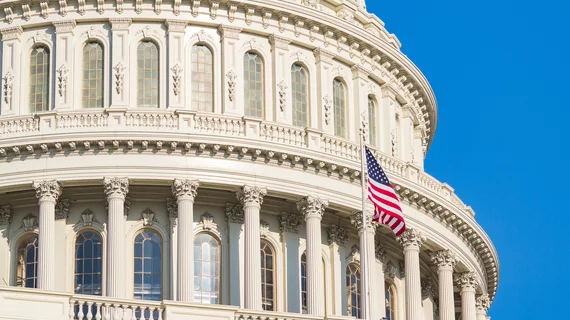Lawmakers reintroduce radiologist-supported bill to soften the blow of residency debt
House lawmakers from both parties have reintroduced a radiologist-supported bill to help ease the burden of medical school debt on residents.
Reps. Brian Babin, R-Texas, and Chrissy Houlahan, D-Penn., proposed the latest iteration of the Resident Education Deferred Interest (REDI) Act late last month. The bill would allow physicians-in-training to qualify for interest-free deferment of their student loans while serving in a medical or dental internship or residency program.
Numerous medical groups have voiced their support for the measure, including the American Academy of Oral and Maxillofacial Radiology and the Society of Interventional Radiology.
“By the time many medical and dental school students finish their required training, ballooning interest payments too often prevent them from further specializing in practices like radiology or serving in rural areas far from large hospitals,” Babin, who also is a dentist, said in a statement. “This bill will help remove those barriers, bringing quality doctors and dentists to patients in my district and underserved areas across America, all while protecting medical students from accumulating massive debt on the front end.”
Members of Congress previously issued a version of the REDI Act one year ago, but it failed to pass. Supporters argue that the measure will help to ease the economic burden on doctors while also reducing provider shortages. The REDI Act would not provide loan forgiveness, nor reduce the borrower’s original loan balance, those involved note.
Groups including the Society of Interventional Radiology recently thanked Babin and Houlahan for reviving the bill. They note that 26 of 36 physician specialties (including radiology) are projected to have workforce shortages in in 2035.
“Providing student loan relief also is a workforce issue,” they wrote in a March 1 letter to the two lawmakers. “In the case of the REDI Act, the ability for medical and dental residents to save thousands of dollars in interest on their loans makes the concepts of opening practices in underserved areas or entering faculty or research more attractive and affordable to residents.”

